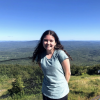Closed Captioning
By kyhongMarch 30, 2023 - 00:37

I often turn on subtitles/closed captioning when watching videos as it makes it easier for me to comprehend what is happening (I find it easier to absorb something through reading versus listening alone). Although I knew they were not always the best at capturing what was said, especially when it comes to dialects other than General American English, I never thought about how even when they are "technically correct," the closed captions are still inaccessible.






